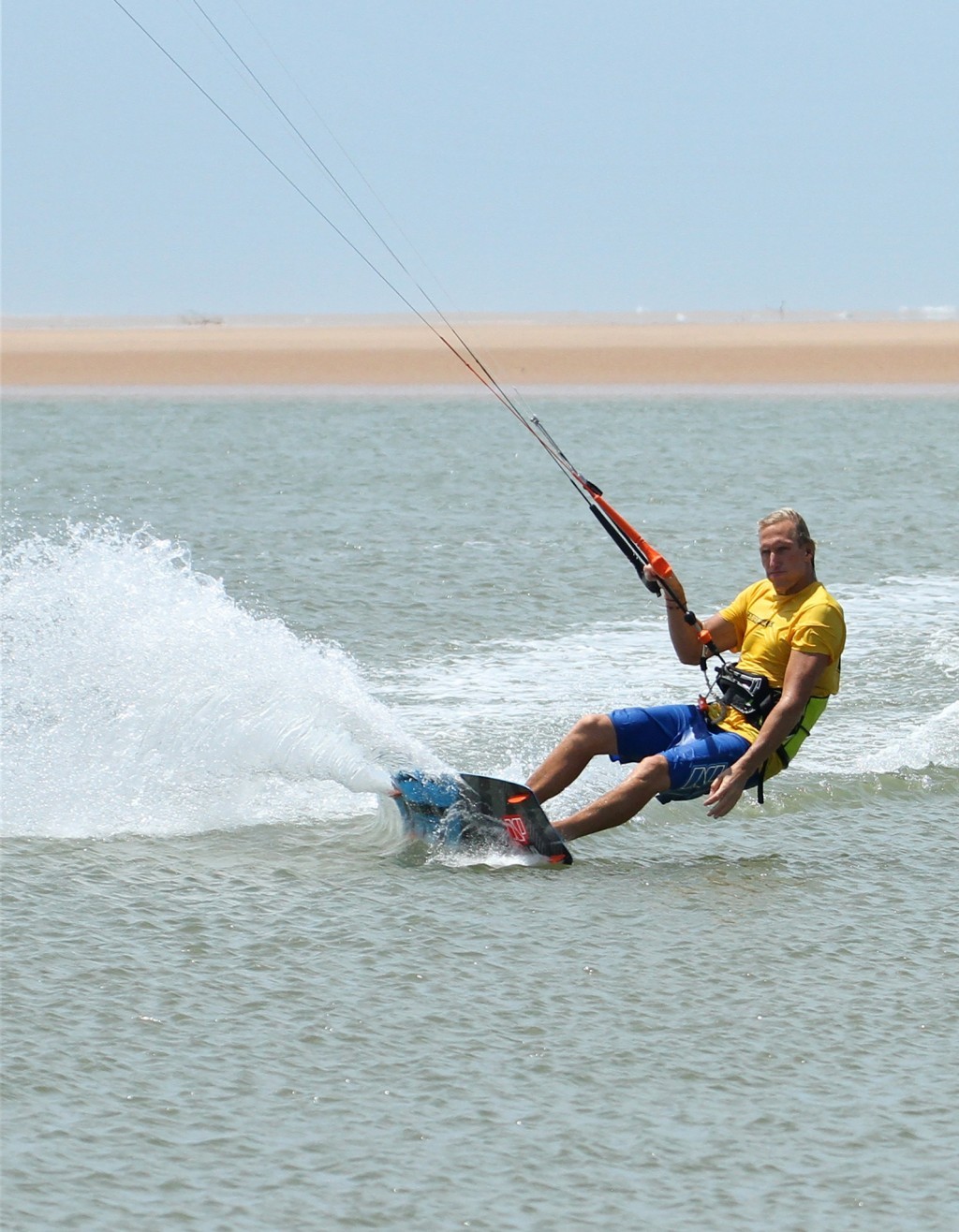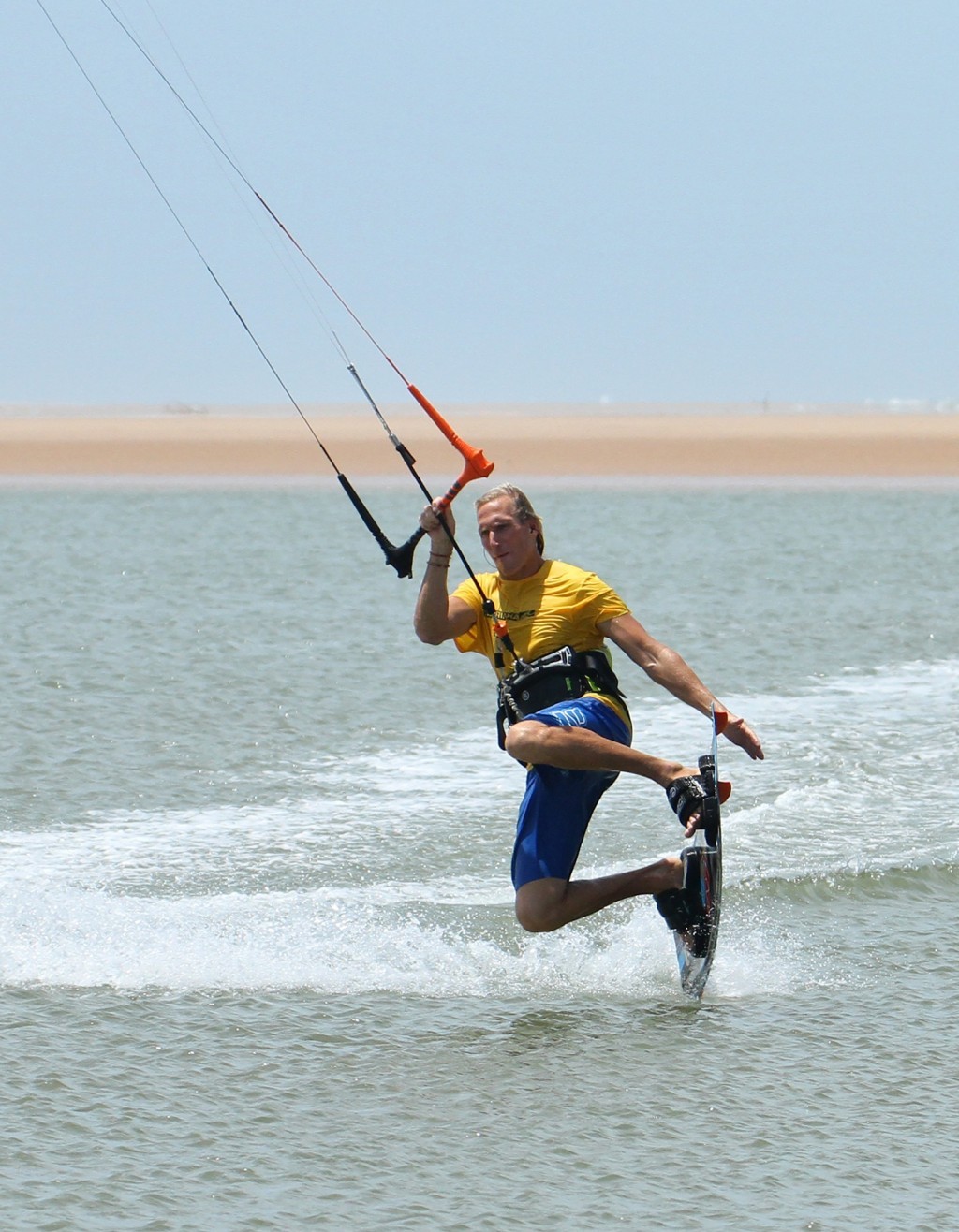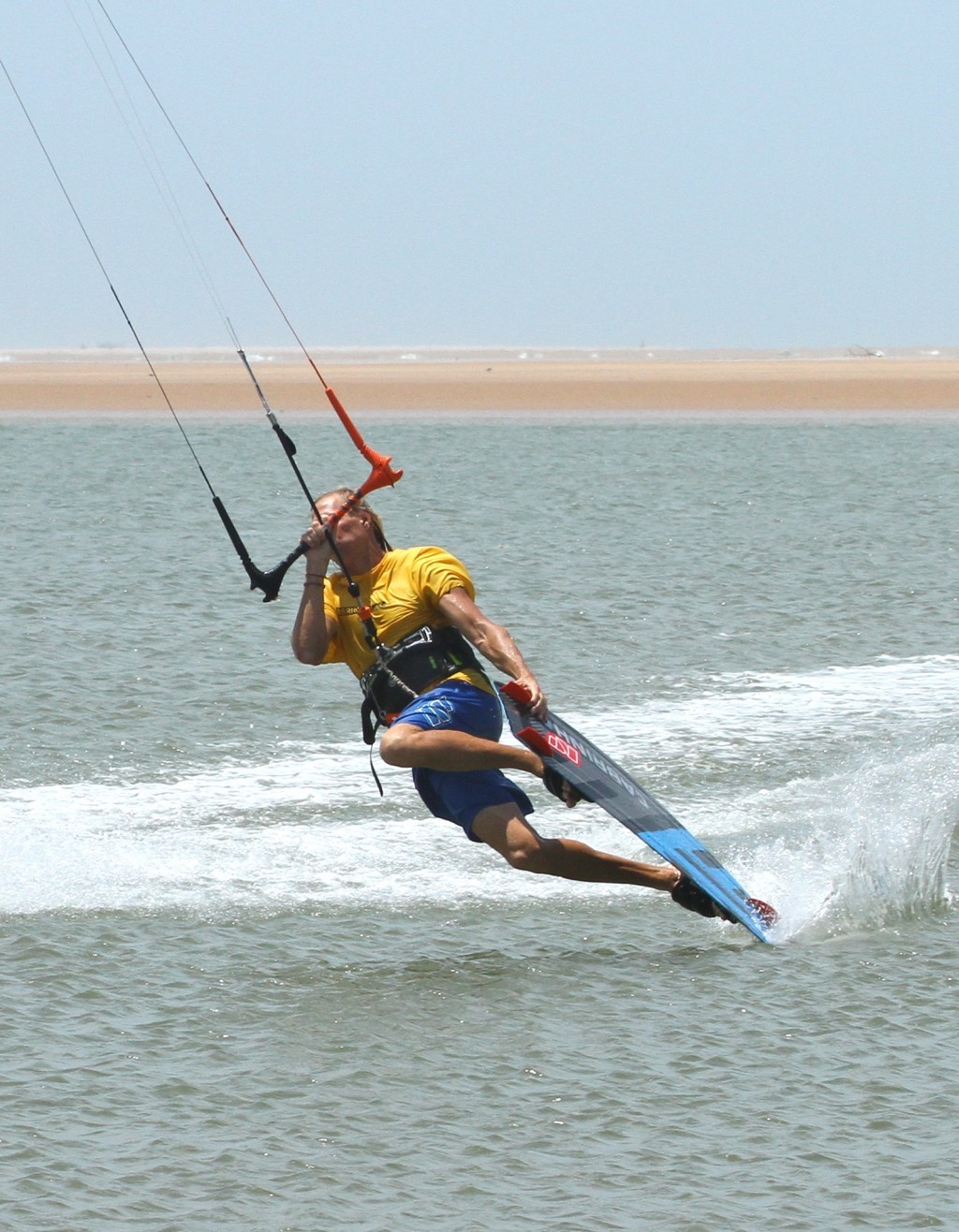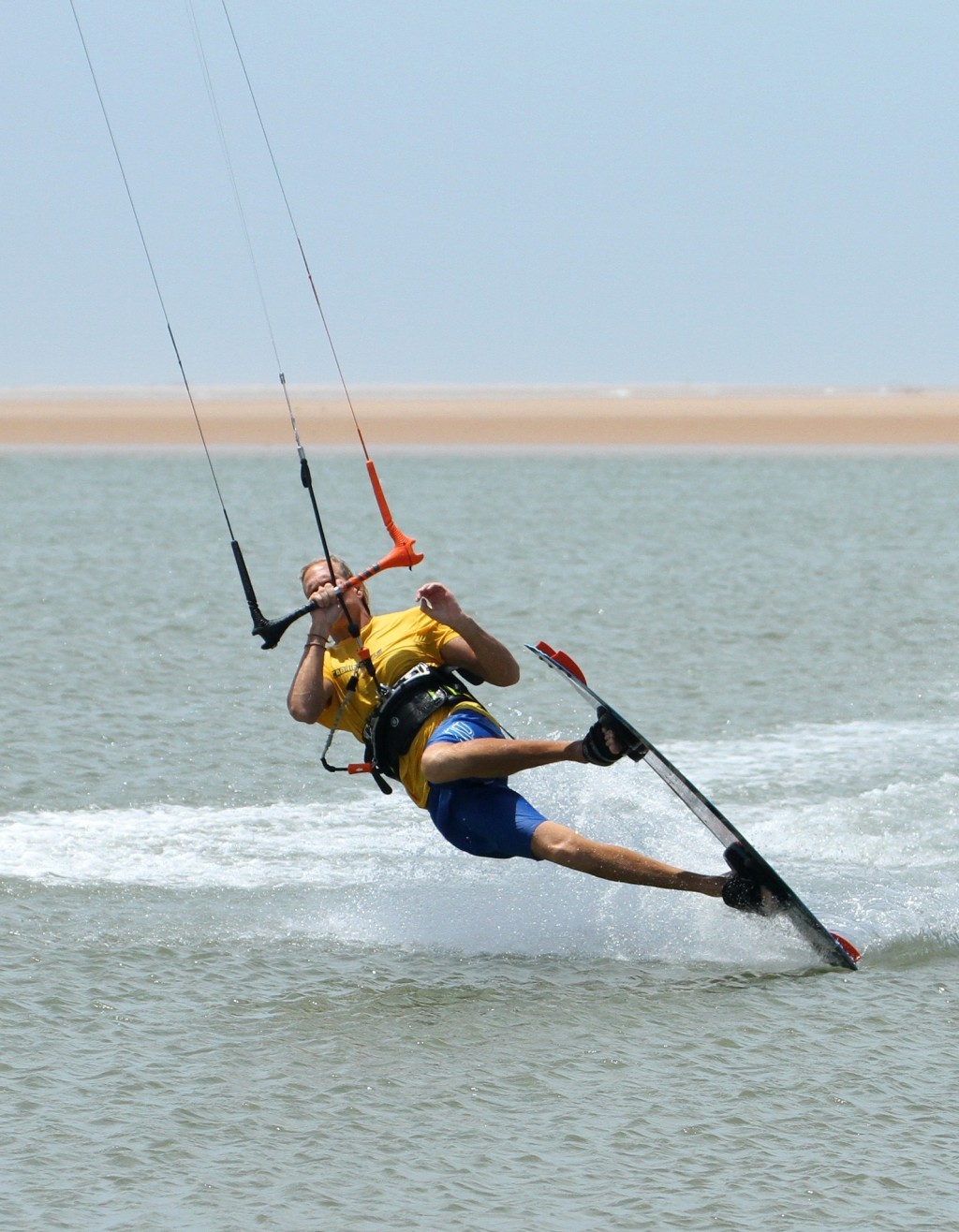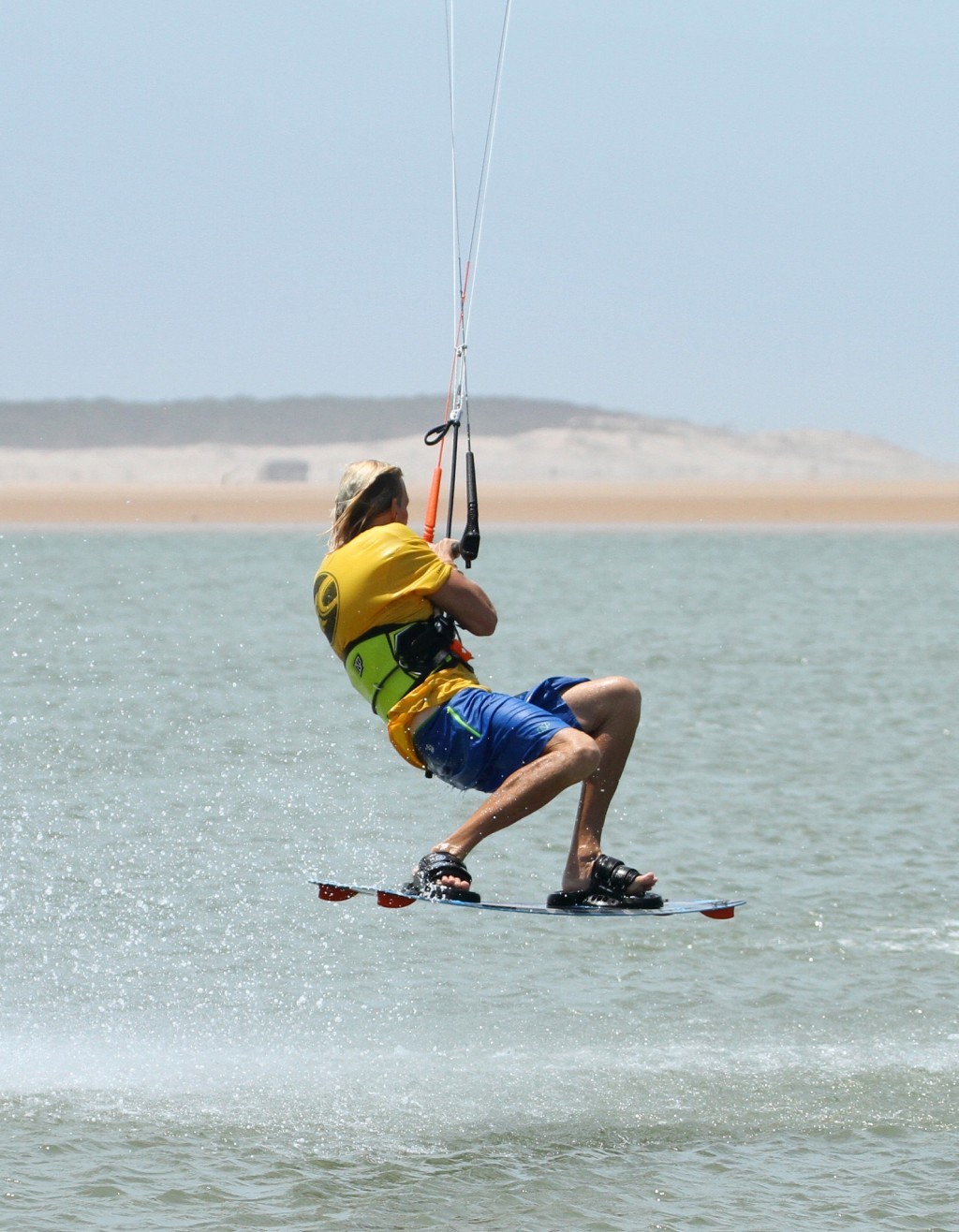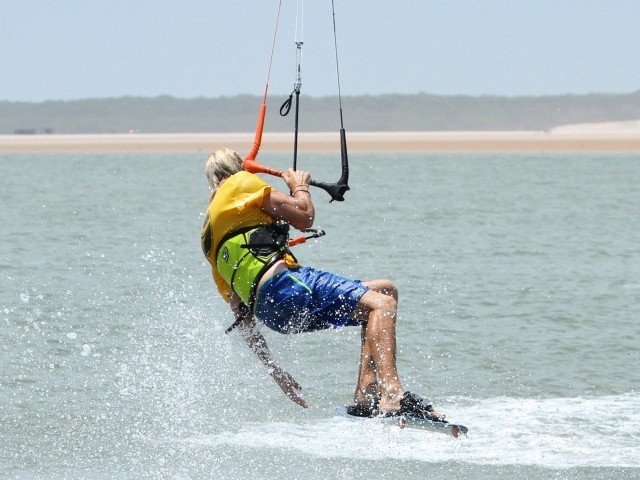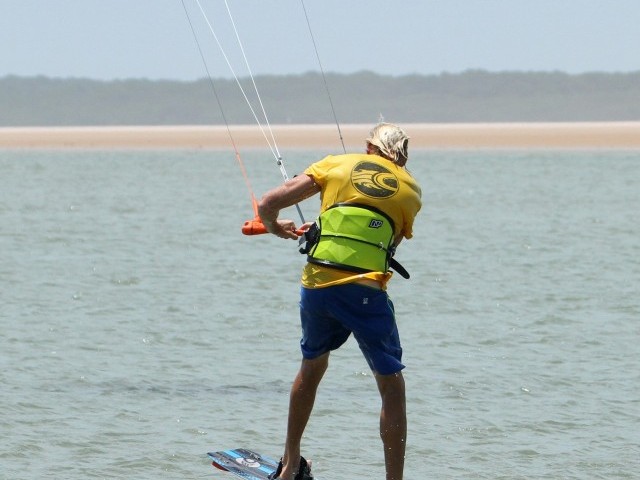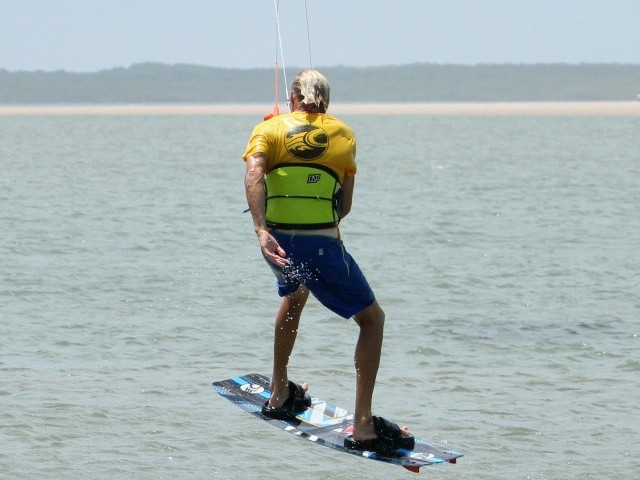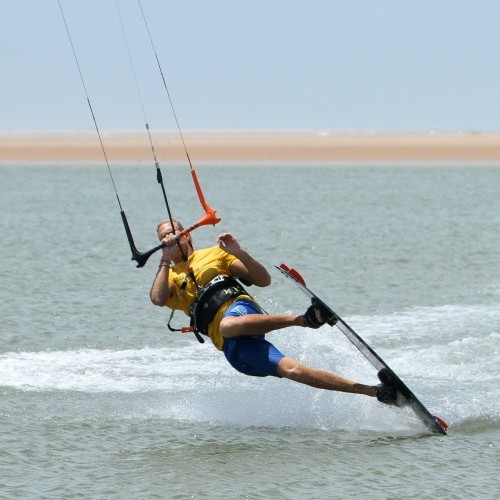
Dark Slide with a Back Roll
Technique / Intermediate
Introduction
If you’re mildly infatuated with dark sliding, spending endless sessions trying to eke out an extra few milliseconds suspended under your kite, indulging yourself in fantasies of sliding yet further, it could conceivably be time to take a step back, press reset and try something else using the skills that you’ve honed so well.Enter the dark slide back roll. It’s a champion add on that’ll help mend your ways, rekindle your stoke and of course impress your peers.
The movement of a dark slide lends itself well to a back rotation, as you’ve most likely encountered with some element of surprise, particularly if you’re grabbing the board with your front hand. The time has come to make it both deliberate and painless. Note to reader, we will take it for granted that you can already dark slide and therefore miss some basic elements of the movement, rather focusing on getting around without a snag. We will also be finishing this move with a late kiteloop, so if you’re accustomed to this mode of exit it’ll stand you in good stead.
Left Hand Free Pic A
If you’re going left that is! We didn’t want to put anyone one off but this should be named the grabbed dark slide back roll. Therefore, if you haven’t grabbed a dark slide yet, now is your moment. It’ll become obvious later why having the front hand off helps so much, but for the moment let us say that with two hands, although very possible, your hit rate will be considerably higher with one mitt (your front one) impaled on a fin. Therefor you’ll be committing from the off, on your approach as Christian is here, although the James Haskell face is optional! Because your front hand is off the back one needs to be up close to the chicken loop. Other than that it’s business as usual, come in with your weight back and low, kite high and a good solid edge, before turning the board up underneath you, letting the bar out and tripping your lower half over.
Fin Grab Pic B
If you can dark slide this is well within your reach. That said the grab can be tricky, and if you’re struggling have a quick look at this image. From the previous position Christian turns the board upwind and completely relaxes his legs so that the board steers underneath him. Having turned the board up Christian has pushed the bar out so that he doesn’t get pulled downwind, this will make the grab way easier as he won’t immediately be extended. Also as he falls, it’s just with his back knee and hips, his shoulders stay upright. Yet again he’s not falling away from the grab. And finally he’s pulling and lifting his front knee up towards the bar, not letting it bend behind him. Once more keeping everything together and increasing his chances of reaching the fin.
Why the grab Pic C
As soon as you’re tripping you should aim to grab the front heelside fin. This will give you a good grip on the board and help support you as you slide. Once you’ve got the grab pull the bar back in to the sweet spot. If all goes to plan you should be in this position. And this is why you grab! With his front hand off the bar Christian cannot pull himself forwards, so gravity takes over and as a result he falls behind the bar. See how the bar is facing the camera as Christian literally rolls backwards. The end result is that you’ll be both sliding and very gently losing your balance into a slow back rotation.
Rolling Pic D
By the very nature of the slide, combined with the kite moving back behind you, eventually you will be off balance and falling downwind of the bar. If this was happening to you by accident you’d pull yourself up and forwards on the bar with your front hand. However now that it’s intentional you’re going to let yourself go with it, actually, by releasing your grab. With no support from your front hand your back shoulder will drop and start to swing you around. You have started your rotation. You only want to start this part once the kite has drifted past 12!
Lift Pic E
Ideally we’d all prefer to be lifted up and away from the water, rather than dragged across it. So you must pre-empt your kiteloop with a hefty pull in on the bar. This will not only lift you and your board off the water, decreasing the chances of you losing the board, or worse still, one foot coming out of the strap. It will also put tension on the lines, so that when you do loop the kite should respond and whip around, rather than take the lazy long lolloping low route down through the power. Here Christian replaces his front back onto the bar and pulls in to get off the water and out of the slide. This part could also be done with one hand. Although you’re then likely to get more power from your loop as you’ll have less control of the kite.
Loop & Look Pic F
Once you’re up you need to commit to the loop, pulling and pushing with opposing hands. You’ll be better prepared if you bring your knees up, as in this compact position it’ll be easier to keep your balance as the kite pulls. You also need to ensure that you can complete the rotation. Here Christian has turned his head, leading his body around the rotation. As the kite pulls it should lead him around and out of the back roll. It’s important that you don’t rotate too far before looping the kite, as it will then tend to over rotate you, forcing you to land on and edge, or further round still!
One Handed Pic F2
The previous part can also be performed with just the back hand, if you’d like to complete the move one handed. You can see how much more Christian is steering the kite with the bar. The reason being that as the power comes on the kite may pull the bar out and away, slowing the kite and increasing the radius, equalling more pull. To make sure it goes around quick a hefty tug with the back hand and a cocking of the wrist as if lifting the kite during body dragging is required. Here Christian uses his thumb to push the front of the bar up.
Safe Arrival Pic G
For a smooth touch down you want the kite to be on it’s way up. This way it will both pull you downwind, so that you can land softly on a flat board, and it will lift slightly, softening the impact which is never a bad thing. To make sure of this keep the bar steered until the very end. You can clearly see here that Christian is still pulling with is back hand and pushing with his front hand to make sure he lands softly with the kite on the right path.
One Handed Pic G2
The same applies if you’re going for the rodeo one handed spectacle. This variation leads better into a transition, as you can more easily bring your back foot through for a toeside landing:) Yet again you can see the front of Christian’s bar as he’s pulling like a barmaid at the last orders bell. Same idea, same reason. Kite must go around and you want a soft landing. One thing of note here is that although Christian’s free arm has been left behind, he makes a point of trying to keep his shoulders parallel to the board. If you open your shoulders to much it’s very possible that the kite will pull you by your back hand, spin you and cause you to over rotate!
Top Tips
We’re big fans of baby steps. If you’ve never grabbed a dark slide before, there’s no sense in looping your first attempt. You need repetition to get the timing right, so rather than nailing yourself with both guns blazing, get the grab and slide until you sink. It won’t be long until you’ve got the timing and therefore can almost guarantee a marshmallow landing.
If you feel yourself rotating too quickly, bailing the kiteloop is also a good plan. Otherwise you’ll end up facing downwind before the kite has come through the power and you’ll be in for some unwanted excitement.
Finally, and what should be most obviously, but that’s coaching for you folks, choose the right conditions to learn this. If you’re maxed it could hurt, so wait until the conditions offer less consequence and then any mistake will merely be a pleasant dunking.
Take your time and have a good gander at the pictures, sequence and videos. This move is all about timing, or more precisely doing everything at the right time. Do that and it’ll be a corker.
Common Problems
If you’re not rotating into the back roll. This will millions of years of evolution trying to keep you safe. It’s a result of holding yourself up. Instead try and relax so that your trailing shoulder drops down towards the water. Also if you get your hips further back on the approach you’ll fall further behind the bar which will help no end.
If you’re being pulled through the water when looping. Two possible causes, either you’re looping way too late, so the kite is very low, or you’re loping to gently so the kite travels low. Try feeling the kite and once you start to slow make sure you pull the bar in before pulling the trigger.
If you’re getting nailed in the loop. If you loop too early, you’ll have too much resistance from your slide and you’ll kiteloop rather than late kite loop. This is often a problem if you’re concentrated on the loop and not the slide, so patience is a virtue. If you are waiting but still getting launched, chances are that you’re either too gentle with the bar, or letting it out as the kite pulls. So commit and keep it going until you land.
Keystones
- One hand off before lifting kite and turning board underneath
- Bar out, grab and slide
- As kite goes back, release grab to initiate back roll
- Pull bar in for lift
- Commit to the late kite loop
This technique article was in Issue 61 of IKSURFMAG.
Related
By Christian and Karine
Christian and Karine have been working together as a coaching team, running improver to advanced kitesurfing clinics since 2003.







